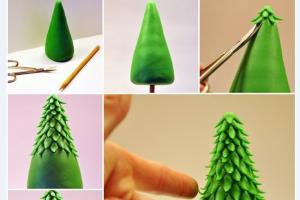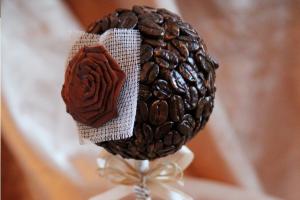Many people have probably seen original epoxy resin jewelry in stores. Such products are very popular, because each decoration combines magic, romance, and creative design ideas. Like frozen drops of clear spring water with amazing compositions inside, earrings, rings, brooches attract fashionistas who want to emphasize tenderness, femininity, and extraordinary taste in the choice of accessories. Undoubtedly, to buy such a product, you will have to spend a lot of money, because the price for original works is fairly high. Do you want to look stylish and elegant while spending a minimum of money? We offer to learn how to make beautiful jewelry made of epoxy resin with your own hands. The process is incredibly creative, interesting, and will appeal to all lovers of beautiful hand made jewelry.
What is epoxy resin
You need to know how to choose resin for creativity. This is, first of all, a synthetic product; its choice should be approached very responsibly.
Round earrings with leaves and flowers Epoxy resin jewelry with leaf
Epoxy resin jewelry with leaf
 Unusual earrings with roses
Unusual earrings with roses
It is not worth saving, because cheap and low-quality material can turn yellow, is too harsh and unpleasant smell, low degree of plasticity and transparency.
All these properties determine the quality and aesthetics of jewelry. It is important that the resin completely imitates glass or transparent ice; amazing compositions from any natural materials. How to choose epoxy resin? The material is safe, it is a transparent liquid, containing chemical resins and hardeners. In the process of mixing these ingredients, polymerization and hardening occurs.
Valuable for its unique properties, the product is widely used by decorators, designers, artists, manufacturers of jewelry and souvenirs. If you learn proper operation with epoxy resin, you can create magical 3D effects and protect any craft from dust, scratches, and moisture. As a rule, manufacturers prepare complex kits for creativity, which include the chemical product itself, gloves, a measuring cup for easy mixing, and a stick for mixing the substance. Preference should be given to trusted manufacturers to avoid harm to precious health. Main secret success - strict adherence to the instructions and proportions of the epoxy composition.
Epoxy resin
Despite the relative safety of chemicals, extreme caution should be exercised when working:
- avoid contact of resin with mucous membranes and the skin of the hands; work with gloves, a medical mask or a protective petal;
- If glaze particles do get on the skin or mucous membranes, you should immediately rinse the area running water;
- It is prohibited to use resins for the manufacture of products that come into contact with food;
- work with the epoxy composition should be carried out in a ventilated area;
- When turning products, be sure to wear a respirator so that particles do not get on the mucous membrane.
Compliance with simple safety rules can make the creative process more comfortable.
How to work with epoxy resin
5 main secrets
Many craftswomen were able to turn their favorite hobby into a successful one. home business, because beautiful and original jewelry is at the peak of popularity today.
 Decorations made of wood and epoxy resin
Decorations made of wood and epoxy resin
 DIY studs made of epoxy resin
DIY studs made of epoxy resin
 Dandelion pendant on a chain
Dandelion pendant on a chain
To learn this art, experienced needlewomen have several secrets:
- Filling forms. The forms, which craftsmen call molds, must be made of high-quality platinum silicone. This type of mold allows you to control the pouring at any stage, as well as comfortably remove the product after hardening. After use, be sure to wash the molds with warm soapy water.
- Temperature regime. You should know that the polymerization process is closely related to the release of heat. During the chemical reaction, the resin can heat up to high temperature, even up to 60 degrees. Please note that the mold for filling the blanks must be heat-resistant.
- The right consistency. Before the polymerization stage, the resin retains the properties of a viscous liquid. If a dry filler such as cork is used, wood slices or baby, it goes down. This should be taken into account when distributing the composition.
- Transparency. The main difficulty that beginners and experienced craftsmen, - air bubbles.
To make the surface and structure of the product as transparent as possible, you can let the mixture sit for a little while and then heat it up. This will allow the bubbles to float to the top, after which they can be carefully removed.
- Use of decor. In this matter, everything is limited only by the imagination of needlewomen. Small cones, leaves and flowers, dried flowers, glitters, rhinestones, beads are the most popular decor for making beautiful jewelry from epoxy resin. When using leaves and flowers, it is better to dry them first. The classic way is like in school, between the pages of a book.
You should not skimp on accessories for your jewelry; the stingy, as they say, pays twice! Agree, it is very important what the painstakingly nurtured compositions inside the transparent drop are framed in.
Video tutorial on epoxy resin
DIY epoxy resin jewelry
Armed with theoretical knowledge and the secrets of experienced needlewomen, you can move on to the practical part of the creative process. We offer several simple and interesting master classes for beginners on making original jewelry.
 Transparent ring with grass
Transparent ring with grass
DIY mysterious ring made of wood and resin
Decoration with dried flowers
To create beautiful earrings you will need high-quality epoxy resin, beautiful dried heather flowers, forget-me-nots, speedwell or any other flowering forest herbs. You will also need a hook for earrings. We will use the simplest method without special molds.
 Brooch and earrings with fern
Brooch and earrings with fern
 The blue flower pendant looks alive
The blue flower pendant looks alive
 Round pendant with cute flowers
Round pendant with cute flowers
The operating algorithm is as follows:
- Let's prepare the epoxy composition. Mix all the ingredients strictly according to the instructions, and then leave the resin to reach the desired viscosity, for about 2-3 hours. Don’t be alarmed; initially, a lot of air bubbles collect in the resin. After the mass settles, they will gradually disappear.
- We draw several stencils on a sheet of paper. You can make them of any shape, oval, round or even irregular, so the product looks more interesting.
- While the mixture thickens, prepare the surface. This stage is very important, because every small speck of dust will disrupt the delicate aesthetics transparent decoration. The surface should be perfectly flat; the top can be covered with oilcloth or cling film.
- We lay out our stencils on oilcloth, and cover them on top with ordinary stationery files. We begin to pour the resin directly onto the file, distributing it over the stencil, and straightening the edges with a stick or toothpick. The height of the workpiece should be 2-3 centimeters. Cover the top with a dome lid.
- Leave the pieces until they completely harden for a day. After we remove them from the files, they are separated from the polyethylene surface without extra effort. We give correct form with a nail file or sandpaper, slightly sharpening the edges of the product.
- We mix a new portion of resin, and in the meantime lay out the dried flowers. Drop a little viscous mass onto the base and apply dried flowers, cover with a lid and let dry. To make the coating three-dimensional, like a lens, we cover it with resin again. We give the final shape with a file or sandpaper.
- Using a needle, drill a hole at the base and thread the earrings. The product is ready.
 Daisies on a red background
Daisies on a red background
Decorations made from epoxy resin and dried flowers
Skeleton leaves
Designer bracelet
Amazing accessories with any filling are cast from epoxy resin. We offer an interesting lesson on how to create an original bracelet.
 Bracelet with flowers
Bracelet with flowers
 Bracelet with grass and red berries
Bracelet with grass and red berries
 Bracelet with delicate flowers
Bracelet with delicate flowers
It will be useful at work:
- special mold for the bracelet;
- two-component resin with hardener;
- plastic container for mixing the mass;
- wooden stick;
- dry leaves or flowers.
Tools that will be useful are simple toothpicks and scissors, as well as sandpaper for grouting.
DIY bracelet made of epoxy resin and wood
Let's get started:
- Wash and dry the uniform. Let's knead the epoxy “dough” in the proportion specified by the manufacturer. Stir the mixture until the bubbles come to the surface.
- Let's prepare the decorative filler. We trim the leaves so that they do not stick out from the mold.
- When the resin has thickened and settled, carefully pour it into the mold.
Filling must be done slowly, in a thin stream. The more accurately the substance is poured into the mold, the less polishing the product will require.
- Immediately place the leaves in the resin in a circle, straightening them with a toothpick. To get all the air bubbles out of the resin, you can put the mold in the oven for 10 minutes, heated to 80 degrees, and then turn it off.
- After heating, take out the workpiece and leave it to harden.
When the decoration has hardened, remove it from the mold and sand down any unevenness and sharp edges with fine-grained sandpaper. To make the surface of the bracelet glossy, open it with acrylic varnish.
DIY bracelet made of epoxy resin
Colored resin products
The creative materials industry keeps pace with the development of the creative industry. Today, epoxy resin can be used to make not only products that are transparent, like a teardrop, but also brightly colored jewelry in any color of the rainbow. Costume jewelry of any shade made from epoxy resin and wood is especially popular. They will easily complement a boho style look, creating a romantic mood. We invite you to create a creative miracle with your own hands by making an original and fashion accessory. In our work we will use transparent resin, pieces of acrylic, sections from wood, and luminous pigments. To shape the product you will need a grinding machine.
 Rainbow earrings made of epoxy resin
Rainbow earrings made of epoxy resin
Let's start the process:
- Let's prepare a sketch of the decoration on paper. Let's distribute the areas where the resin should be and where wooden decor, let's define color transitions.
- We glue pieces of acrylic, put wood slices on the bottom according to the sketch, glue them to the base so that they do not float up in the resin mass.
- Mix the resin and hardener in the required ratio, add a blue or green fluorescent pigment to the mixture. If you use a simple luminous pigment, the resin will simply take on a milky hue. With colored pigments, the product looks brighter and more original.
- Mix the resin, stirring with a stick strictly in a circle so that the bubbles come to the surface. We fill the workpiece.
The polymerization time depends on several factors: room temperature, correct mixing and ratio of ingredients.
Cover the workpiece with a lid to prevent dust particles from getting on the delicate surface.
- After a day, if the workpiece has frozen, we disassemble the formwork and remove the block. It's time to give it the required form.
Using a grinding machine, we level the surface, cut out the desired shape according to the sketch, and process the edges of the product.
From one block you can make several decorations on the same theme for yourself, as well as as a gift to family and friends.
Jewelry made from epoxy resin is always stylish and original. Each product combines natural fragility, tenderness and the unique creative thought of the master. Having learned all the secrets of unusual art, you can create with pleasure, creating collections of unusual designer accessories.
Earrings “Colored glass” made of epoxy resin and paint
Fruit rings

Both epoxy and jewelry wire, in the sense of jewelry, special. Regular wire is uncoated and darkens over time. This can, of course, be used as an advantage, but it is not a fact that oxides will not damage the product in the process. More or less suitable aluminum wire can be flower shops. But again, most likely without coverage.

We take a wire that is soft enough, but not too thin. I have aluminum 1.5 mm coated. We turn the ring. It is advisable to use some known even shape.

Use side cutters to cut off the long end of the wire. Keep in mind that in this case one tip (here it will be on the right) will be sharp, and the second will be perpendicular to the wire, which is what we need.

In the same way, we cut the tail very, very close (or better even with a tiny margin) to the first cut.

Connect the ends of the ring. The closer they fit to each other, the better.

Now we glue our ring onto wide tape, which it is advisable to first secure to flat surface(I have ceramic tiles or glass) sticky side up.

Since it is better to dilute epoxy in at least 10 ml, then several blanks should be made at once, unless of course you want to throw away excess diluted epoxy. It is very important to check the tightness of the ring to the surface.

Next, I fill the frames with artistic waste - inlays. In general, they advise pouring the bottom layer first, and then pouring in the garbage, but since the time from mixing until the epoxy hardens is limited, I do it in a different order.

So, the blanks are laid out, the tightness is checked, and you can breed them.

I use Ice Resin (odorless, liquid and almost no bubbles - the latter is very important). I measure out the same amount of resin and hardener...
It is very important to measure the exact amount of liquids. Epoxy is an insidious thing: a little more hardener and it will start to “goat” (that is, reach for the tool with such horns) too quickly; any less and you'll be waiting forever for the lenses to harden. :)
Once again: special epoxy, jewelry Ice Resin or Crystal Resin. It differs from the industrial one in the absence of odor, greater transparency and less bubbles. I ordered it here: http://vkontakte.ru/club13872192 - here it is:

Once upon a time I tried to make fillings with epoxy glue - the quality is much worse, it is more difficult to work with and in general it is not intended for jewelry purposes.

I knead. At first, the resin becomes cloudy and opalescent stains appear in it - this is normal. Continue stirring for another minute and a half... Until the mixture becomes transparent. Large bubbles will come out on their own, small ones gradually too. However, in the product they will need to be helped to “hatch”. From the start of mixing until the epoxy begins to “rise”, it takes us about 30-40 minutes.

Fill in the lenses. I use a rubber stick for oil (it will be further in the frame), and I also use it to push out bubbles.
The initial filling, as can be seen in the photo, does not completely cover the “garbage”. This is fine. On at this stage We just need to create a “bottom” and secure the drawing. You can even pour less - I overdid it in the frames in the lower right corner. :) We have half an hour to do everything: fill it, push out the bubbles with a needle or a glass, make sure that the lenses are filled more or less evenly.
Now we exhale for 8-10 hours and hide our signs with fills on a distant, dust-free shelf and cover it with a lid, leaving a small gap for air between it and the shelf.

Stage two. After 8-10 hours, the lenses are ready for secondary filling. Mix the epoxy again and carefully apply the second layer. It should cover all protruding parts.

Epoxy does not contain solvents, so it does not shrink when cured. In addition, it is viscous, so if you pour it “heaped”, it will flow to the edge and stop there. But here it is important not to overdo it.

After another 8-10 hours, we remove our lenses from the tape. On
At this stage they look scary. Now we take the solvent and wash off the remaining adhesive tape. Alcohol, gasoline, white-spirit, acetone or nail polish remover will do.

Pour the third layer from the inside out and dry for another 8-10 hours. Voila. :) You can drill, insert into a frame, braid with wire and anything else your heart desires.
And more epoxy work




My favorite is heather. :)

Bracelet with heather


The poppies are plastic, but the lemon balm petals and blades of grass are natural (that’s where the herbarium came in handy).

Bracelet " Fresh water". Freshwater pearls, mother-of-pearl and other garbage. :)

Jasper chips, aventurine glass, fluorite sand and mother-of-pearl chips in jewelry epoxy and gilded wire. Tie pendant

Lapis lazuli chips, mother of pearl, dried heather, fluorite sand in epoxy and gilded wire. Bracelet.

Bracelet and medallion.
Jewelry created using epoxy resin and mold is amazingly original appearance. This master class will present step-by-step instruction, supplemented with photographs and detailed description each stage. By repeating all the steps of the wizard, you can create your own unique decoration, attracting the attention of others.
So, for work we will need:

- epoxy resin;
- silicone molds that are combined with epoxy resin;
- disposable gloves, plastic cups, syringes, sticks for mixing ingredients;
- decorative elements: shells, colored pebbles, dried flowers;
- powder, stained glass paints and gold leaf;
In order not to stain the table surface, it is better to do the work on a regular file. A hemispherical pendant will look beautiful if you add dandelions to it. For work, we will need two dandelions, so that later we can compare how they look in the finished version.

Before work, carefully rinse all molds prepared in advance and wipe them dry with a cloth. Wear disposable gloves to protect your skin from unwanted damage. After this, pour resin and hardener into plastic cups. In the future, it will be convenient to draw them into a syringe. Carry out all jewelry making steps in a well-ventilated room.

Measure required amount epoxy resin and pour it into a clean a plastic cup. Using a syringe, draw up the hardener and add it to the resin cup. Different manufacturers indicate different proportions required to obtain the result. Therefore, please read the instructions on the package first. It is important to carefully follow all manufacturers' recommendations for work. The quality and beauty of the finished craft directly depends on the accuracy of the calculations. If you mixed epoxy resin and hardener, but the mixture does not harden, then the proportions are off. This can also happen due to insufficient thorough mixing of the ingredients.
If the syringe has a rubber insert, the hardener will not splash. The resulting mixture is mixed with previously prepared wooden sticks. You can use kebabs skewers. The solution should be stirred for ten minutes in a circular motion.

The dandelion fits very neatly into the mold. Parachutes that interfere with work can be removed using tweezers.

After mixing the ingredients, leave the resin for half an hour. This time is enough for all chemical processes to take place. See what's happening chemical reaction, depending on the condition of the glass. It will heat up. It is not recommended to work with epoxy resin in hot weather, as the reaction proceeds quite violently and the resin completely hardens within half an hour. Although, different manufacturers offer epoxy resins of different quality.
Carefully, in a thin stream, pour epoxy resin over the dandelion placed in the mold.

After hardening, the resin will settle a little. Therefore, it should be poured into the mold with a small margin (convexity).

Now let's try to make beautiful rings from glass washed by the sea.

So, take some resin, lay out the pebbles and fill them with the mixture in the same way as when working with a hemisphere. A small bulge should form.


You can make earrings with dandelion parachutes. Pour a small amount of resin and spread it carefully using a stick. This step will thicken the resin slightly. This will help the parachutes stay in the position in which they were stowed.

Make a bouquet.

Pour some resin on top to create a bulge. If you work very carefully, then minimal sanding of the product will be required in the future.

A truncated ball is created in a similar way. Fill half of the mold with resin.

Using a toothpick or needle, place the required number of parachutes.

Pour epoxy resin into the mold.

Now let's try to make a beautiful bracelet decorated with shells. Pour resin into a special bracelet mold. At this point the epoxy became even thicker. This is what we need. Add pebbles and shells to the mold. The crushed shells will stick to the walls, giving the impression of being suspended.

About half an hour ago a new batch of resin was prepared. It should be poured into the mold from above. This must be done with extreme care to avoid the formation of bubbles. What to do if bubbles appear? Preheat the oven to 80 degrees and place the mold with resin there. Leave in the oven until the temperature increases to 204 degrees. After this, the bubbles will come out.

Make sure that the mold is in a level position during operation. Otherwise, the resin will harden at an angle. Remember that the more carefully you work with epoxy resin, the less sanding you will have to do on the finished product.

Now leave the mold for a day until it dries completely. To prevent debris from getting onto the surface of the future product, cover the mold with a box or lid.
While the bracelet is drying, you can make a pendant. Let's start by creating the main background. To do this, apply to the workpiece liquid plastic. Cover it up polymer clay, rolled out into a thin layer. The resulting composition is baked in the oven. After cooling, you can start working.

Pour a couple of drops of resin onto the surface. Using tweezers, a composition is made from dried leaves or flowers. In this case, the resin is the glue. She will not allow the composition to budge. Fresh flowers should not be used to create the composition. Over time, they will turn black and lose their appearance.

There is a holder on the back surface of the pendant. It should also be placed in a mold to create a flat surface. It is not necessary to think through the composition in advance. You can create masterpieces by improvising.

The result is a unique picture. The craft needs to be dried. When it dries, a second layer of resin is poured, forming a bulge.

After a day, the bracelet hardened and can be taken out of the mold. This is the top part of the product.

Rings, earrings and pendants are created in a similar way.

Beautiful hemisphere decorated with dandelion.


Unusual truncated transparent balls with parachutes.

You can also make small decorative hemispheres.


Previously made rings decorated with sea glass.

To give epoxy resin bright shade, you can add a little powder or stained glass paints. If you decide to use stained glass paints, add very little to the resin. Otherwise, the proportions between the resin and hardener may be disrupted. Ready product will not harden, but will become sticky.

If you add gold leaf, you get very unusual jewelry.

And these are beautiful lenses decorated with dandelion parachutes.

The reverse side after drying remained flush with the edges.

This back side pendant, which was obtained after the resin hardened.

It should be sanded carefully. To avoid breathing dust, you can use a respirator.

After grinding, this is the back part of the hemisphere.

All sharp and uneven edges must be carefully sanded after the resin has cured.

We do the same with the bracelet. You can use a special manicure machine.

If you work carefully, then minimal sanding will be required in the future.

Sanded edges can be varnished. The varnish layer should be very thin.

After it dries, you can enjoy the result of the work done.

A very beautiful frame was chosen for the pendant, which is decorated with a miniature steel butterfly.

Today, fashionable rings made of epoxy resin are quite popular; they have a variety of shapes, as well as various additives and fillers, and the resin can be given any color. You can put shavings, glitter, or some kind of insect into the blank, everything turns out very beautiful and interesting, and most importantly unique, which comes first in our difficult times.
Despite the apparent complexity, the whole technology is quite simple and understandable, you just need to delve into the process a little and you can make yourself a dozen rings of different sizes)))
The base is epoxy resin and hardener in a ratio of 10/1, glitter and wood shavings are added. First, the required amount of resin is poured into the container, then glitter is added to it and everything is thoroughly mixed, then the shavings and stirred again. The epoxy resin is painted with color; you should add a little at a time at the tip of a toothpick, stirring to catch the desired color. The hardener is added last in a ratio of 1/10 of the total proportion of resin, that is, for example, 10 grams of resin and 1 gram of hardener, everything is mixed very thoroughly.
So, let's look at what exactly is needed to make an epoxy resin ring?
Materials
1. epoxy resin
2. hardener
3. glitter
4. wood shavings
5. color
Tools
1. container for preparing the solution (plastic cups)
2. silicone mold
3. emery
4. pliers
5. drill
6. round file
7. waterproof sandpaper with grain 600/1200/2500 grid
8. mini grinder
9. caliper
Step-by-step instructions for making a ring from epoxy resin with your own hands.
The first step is to prepare all the components so that everything is at hand during the work; you also need to wear gloves made of latex or mica, because the resin is very sticky, and the hardener is aggressive when it comes into contact with open areas You can burn your skin, so safety comes first. A respirator is also a mandatory safety measure against fumes of resin and hardener; in small quantities, of course, it’s not so scary, but still..
To fill the blanks, it is best to use a silicone mold, because it is very easy to remove the filled figures later and nothing sticks; you can also make the mold out of paper and cover the inside with tape, which is also a good option for starting work)
It is advisable to spread mica or a simple bag on the table so that drops of resin, color and hardener do not stain the surface of the table.
After which the author pours epoxy resin into the container, adds glitter and makes it smooth, then wood shavings, adding color a little at a time on the tip of a toothpick so as not to overdo it with contrast. In this case, the author used 3 dyes: black, blue and green.

Everything is mixed very thoroughly.

Next is important! It is necessary to expel air bubbles from the solution, and the author does this using a homemade vacuum installation. That is, a glass of resin is placed in a jar and air is pumped out from there within 10 minutes. Additionally, the resin can be heated in a water bath to 50-60 o C
this way it will become even more elastic and air bubbles will come out much faster.


Epoxy resin with an added hardener hardens after 24 hours; the hardened workpieces come out of the silicone mold quite easily.


These are the blanks for making rings. The work is very dusty, so we change into work clothes and protective equipment: respirator, goggles, gloves.


Then we begin to grind the ring with inside, the sandpaper used was 2500/1600/600 grit. It is necessary from the inside, because the degree of polishing of the product will be determined by the inside.

The outer part of the ring is sanded with waterproof sandpaper.

Starting with coarse grain and gradually reducing to 600.

Polish the ring with a burr with polishing paste. The author bought it at a car dealership.

In general, the end result is such beauty.




The author made all these rings to order and sent them by mail to customers in all regions of our vast Country. How do you know the products self made They are always in demand, and especially nowadays, the price for designer rings is decent. So you can take it as a basis for a small home business, the set of tools is minimal, the materials are freely available and for sale, so we take it and do it. Be brave, friends!
This concludes the article. Thank you all very much for your attention!
Come visit often and don't miss out on new items in the world of homemade products!
Tweet
Cool
One of the largest fashion trends in the fashion and beauty industry is the creation of hand-made jewelry. Therefore, I bring to your attention an ultra-fashionable technique for creating original jewelry made of epoxy resin.
To create epoxy resin jewelry you will need:
Silicone forms (molds),
A variety of natural materials (dried flowers, shells, etc.),
Epoxy resin,
- container for stirring, toothpicks, disposable gloves.
So, epoxy resin - what is it? This is a product that consists of two components: the resin itself and the hardener. When they are mixed, the material hardens and then polymerizes. The hardener is a significant component in the working mixture, so it is added 1:1 in relation to the resin or more (depending on the type of resin). After hardening, epoxy resin turns into a transparent and very hard plastic, externally imitating plexiglass or even real glass, only unbreakable.
Epoxy resin has high strength (much higher than conventional glue), it resists wear better, and its ability to take the desired shape during polymerization even at low temperatures is what is required when making jewelry at home.
Dried flowers, pebbles, shells, beads are original decor, which is used in epoxy resin jewelry. These natural materials add variety and define color scheme decoration
Master class on making a bracelet from epoxy resin
And now I bring to your attention a simple master class on making a bracelet from epoxy resin from needlewoman Ekaterina, known under the nickname Devona Sun Design.
Materials:
Bracelet mold (can be purchased at craft stores or online stores that stock epoxy resin)
Disposable resin mixing cup
Mixing stick
Dry leaves
Toothpick, scissors

So, first, wash and dry the silicone mold. Mix the resin with the hardener (in this case in a ratio of 1:3, but each manufacturer has its own proportions, so you need to carefully read the instructions for the resin). Stir well until smooth and set aside to release any bubbles.
Prepare the dry leaves by cutting off the excess with scissors so that they do not protrude from the mold.
After 10 minutes, when the resin has settled, pour it into the mold. The more carefully you pour the resin into the mold, the less you will need to sand the finished product later.

Then use a toothpick to place the leaves into the resin. Spread them out carefully. In order for the remaining bubbles to come out of the resin and for faster hardening, place the mold with the bracelet in the oven for 10-15 minutes, heated to 80 degrees and turned off. Then you should remove the mold from the oven and leave it to harden for a day. When the bracelet has completely hardened, carefully remove it from the mold.

The sharp edges of the bracelet should be sanded with fine sandpaper. Then the bracelet needs to be opened with varnish (any acrylic will do). The bracelet is ready!
Bracelets made using the same technique.














In addition to natural materials, you can use photographs






and other materials.
Master class on making pendants, rings and earrings with rose buds from epoxy resin
You can make not only bracelets from epoxy resin, but anything you want, any unique jewelry. I offer you a master class on making pendants, rings and earrings with rose buds from epoxy resin from the wonderful craftswoman Rusalina.
Materials:
Silicone forms
Two-component epoxy resin (with hardener)
Dried rose buds
Metal fittings
Hot glue gun

Prepare Silicone forms: Wash with soap and dry well. Rosebuds should be taken with a color transition or with inclusions - they will not change their color after complete drying. They should be dried with their heads down.
The epoxy resin must be diluted with the hardener according to the instructions using a wooden stick to a uniform transparent consistency. To avoid bubbles in the resin, you need to put it in an oven preheated to 60 degrees for 5 minutes.
Then, using a syringe or using a wooden stick, fill the silicone molds halfway with resin, place the rose buds in them head down and top up with the remaining resin.
Then you need to leave the mold until completely dry in a warm, dry place for a period of 24 to 72 hours (depending on the depth of the mold).

After complete drying, you can remove the product from the mold; this is easiest to do under running water. The edges of the product, where there was open space that was not hidden in the mold, need to be sanded using sandpaper. Then take the hardware you want and use a hot glue gun to glue the epoxy resin product to it.











Master class on making jewelry from epoxy resin with dandelions
And one more interesting master class from craftswoman Anastasia Parfyonova known under the nickname NikaLiza. This time there will be dandelion parachutes in epoxy resin. Dandelions in jewelry evoke associations with lightness and serenity.
Materials:
Two-component epoxy resin (with hardener)
Silicone forms (molds)
Dandelion parachutes
Disposable gloves, cups, syringes, mixing stick

First you need to wash and dry the molds. Then, wearing gloves, pour the resin and hardener into the cups. Having measured out the required amount of resin and hardener using syringes, pour them into another glass and mix together wooden stick. You need to knead thoroughly, in a circular motion, so that all the air comes out - this will take about 10 minutes. After this, you should leave the epoxy resin for half an hour.

Then place the dandelion in the mold and carefully fill it with resin on top. For complete hardening, wait exactly one day and remove the product from the mold. If necessary, sand a little with fine sandpaper.


You can also make similar decorations with sea pebbles, shells, pieces of glass, gold leaf, etc. And if you add a little stained glass paint to the resin, you can get products with a variety of colors.

Jewelry made using the same technique.












